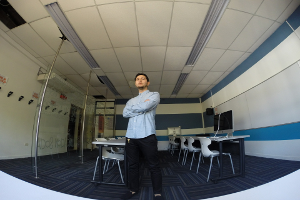What Architects Can Teach Building Product Manufacturers
- < Mindful MATERIALS – From Database to a Powerful Tool
- > Does Your Product Contribute to the LEED v4 Low-Emitting Materials Credit?
“Find an inner place. A belief. It sounds mystical. Trust it and never depart from it. Keep your flame alive. Every action should come from that inner belief system,” says Antoine Predock in a recent AIA podcast. Renowned architect and artist, Predock states that buildings are all about process. The richness of the process is what makes it come alive and gives it a spiritual life. Predock was awarded the 2006 American Institute of Architects Gold Medal, the highest honor the AIA confers on an architect. Predock’s work ranges from the famed Turtle Creek house, built in 1993 for bird enthusiasts along a prehistoric trail in Texas, to a $285 million ballpark for the San Diego Padres. How can Predock’s philosophy about design influence building product manufacturers?
Keep an Open Mind
Throughout the ages, a building’s purpose, function, and program can change. Predock states “the Pantheon changes from a pagan temple to a Christian church overnight, so these kinds of tremendous reversals are also part of the possibility. This means that any building must have a life of its own, in a way independent of program, but of course accommodating the original program. When architecture becomes solely program-driven and is merely a functional diagram, without other admixtures, it becomes a rather empty determined condition. Like a body without a soul.” Building product manufacturers should keep an open mind when approaching any project. Drop your preconceptions.
Expect the Unexpected
Every building project is different. Some projects might have many similarities, but the most interesting building projects are those that surprise us. Yes, there can be speed bumps along the way, but there will be obstacles to achieve success with any project. “Architecture is a fascinating journey toward the unexpected. It is a ride, a physical ride and an intellectual ride,” says Predock.
Collaboration
“When I am working on projects with my team — and it is important to underscore the collaborative component in my work — we remind ourselves that we are involved in a timeless encounter with another place, not just a little piece of land,” says Predock. The design and construction of a building can only be successful through collaboration. The architect, contractor, product manufacturers, trades, etc. must all work together for a common goal. In addition, one should work with and collaborate with the site, movement of the sun, wind, and other natural forces. “I try to understand place on a deeper level than just the physical or environmental aspects. It includes cultural and intellectual forces, too. It's an inclusive approach that brings in many disciplines and sees place as a dynamic thing,” says Predock.
What have you learned from architects? What strategies do you use to ensure a positive collaboration on a building project?
For more information or to discuss the topic of this blog, please contact Brad Blank





